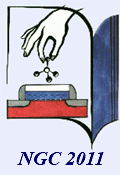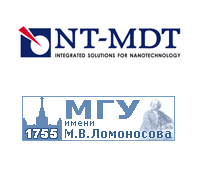
Nano and Giga Challenges
in Electronics, Photonics and Renewable Energy
Symposium and Summer School (Tutorial Lectures)
Moscow - Zelenograd, Russia, September 12-16, 2011


|
Nano and Giga Challenges in Electronics, Photonics and Renewable Energy Symposium and Summer School (Tutorial Lectures) Moscow - Zelenograd, Russia, September 12-16, 2011 |  |
Commentary Kendrick White
In the wake of September’s Nano & Giga Forum promoting new dimensions in science I think it’s crucial to further talk about ways of applying those new dimensions to markets. There are a lot of structural impediments to creating an innovation economy in Russia, and the end result is very few private investments going to technology and very little funding supporting commercialization of R&D into market-driven solutions. And moreover, there’s a fundamental disconnect between Russian universities and government-run R&D hubs aggregately referred to as ’Innovator’, and business. So a way out that we can see is to ’domesticate’ the very successful international idea of pre-seed funding proof-of-concept (PoC) centers. This is an effort to promote collaboration at an early stage where business professionals will estimate the commercial applications of technology and prepare projects for presentation at later-stage rounds of financing. The primary focus of such centers will be packaging early-stage technology ideas into qualified, fundable real investment projects for angel and VC investors.†In our opinion, this is the weakest link in Russia’s emerging innovation economy. We are dedicated to promoting a dialog on this topic within each of Russia’s potential innovation clusters, in the hope that the barriers blocking domestic innovation economy development will be overcome. Having analyzed the inner workings of five PoC Centers in the United States, including University of Colorado; MITís Deschpande Center; the Von Liebig Center at University of California, San Diego; University of Utah; and Arizona State University, we in Nizhny Novgorod have developed the methodology of how a PoC Center will work in Russia. Our focus was to avoid ’mimicking’ one of the centers in America; we tried to take the best and most pragmatic aspects of each of these centers and screen out what we felt was not applicable for Russia. The PoC Center must bridge the gap between innovators and business by lowering risk barriers and encouraging private investors to risk their capital on innovation projects. In addition to identifying innovation leaders and investors, promoting collaboration between academia and business and providing financing and training programs the PoC project aims at ultimately transferring Nizhny’s PoC Know How methodology on to regional partners in order to develop a network of such centers in each of Russia’s key innovation clusters. Once proven to be successful in Nizhny Novgorod, the program will then be rolled out within an estimated 36 months into nine other cities across this country, including Yekaterinburg, St. Petersburg, Vladivostok, Novosibirsk, Astrakhan and some others. What we’re trying to develop with this PoC Center is an ongoing program, which will continue to deliver a pipeline of new projects year after year at a rate of approximately eight to ten projects a year coming from each PoC. So over a ten-year period you could see up to 800 different innovation projects coming from across Russia developed and fed into the pipeline. A role of the PoCs will be to stimulate this ongoing demand and ongoing development of projects. Another role of a PoC would be to help convince local business angels that the project is commercially viable and they will make profit on it. That will attract both angel investors and the RF’s institutional entities as co-investors, and those projects will then move on to the pipeline of VC funds. Itís also essential to support effective project collaboration through the PoCs tapping into the global Russian Diaspora of technology experts and pairing them up in a ’Mentor the Mentor’ program with the leadership of each PoC-funded project. The PoC Center will work to create a specific funding mechanism, which will allow for creating travel budgets and daily consulting fees to bring ethnic Russians with experience in project commercialization to Russia to help fellow Russian colleagues in science. The idea is to link the envisioned ten PoCs in Russia with ten separate PoCs in the U.S. as the pioneer of this concept (probably the states of Arizona, Colorado and Utah and such cities as Chicago, Stanford, Boston, Cleveland, San Diego, Pittsburg and New York). This list is by no means exhaustive, but it’s an example of where we feel there’s a strong community of Russian scientists and innovators connected with local academic institutions. The ultimate goal is to develop strong linkages between different innovation clusters, which is absolutely mandatory if Russia wants to develop a successful innovation economy. Each of the prospective PoCs will develop its own focus, which is consistent with its respective regionís competitive strengths as well as the long-term strategy of the local government. And I would like to emphasize that the workshop that Marchmont ran in close collaboration with Nano & Giga Solutions on September 13 had been designed to work in sync with the PoC idea and add yet another step to the ladder from science to business. Anatoly Korkin is a member of my company’s Advisory Board, and I am on Nano & Giga’s, so our efforts found a good synergy there. In my opinion, the event served its purpose perfectly.
Interviews with Kenrick White:
On-line interview at STRF.RU |
Empowered by Nano & Giga Solutions and NT-MDT
© 2010